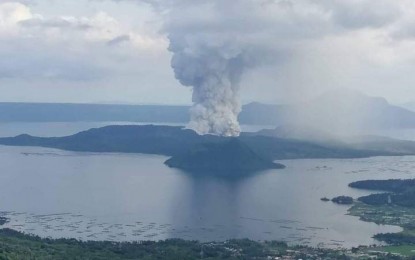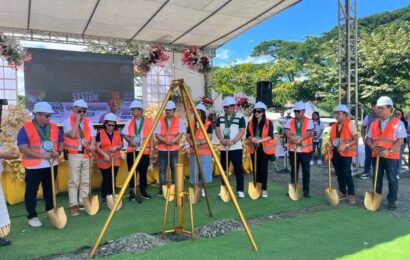
In Agoncillo, 2,404 individuals or 736 families from Barangay Banyaga and Bilibinwang were evacuated. In Laurel, 1,699 individuals or 478 families from Barangay Busoi-Buso, Gulod and Bugaan East were affected.
In Talisay, 13 individuals or 5 families from Barangay Quilling in Talisay were evacuated, while 27 people from nine families from Barangay Don Juan in Cuenca were also brought to the evacuation centers.
They were taken to 20 evacuation centers.
This is higher than the tally of the National Disaster Risk Reduction and Management Council (NDRRMC), which said there are almost 3,000 individuals who were displaced from their homes after Alert Level 3 was raised over Taal Volcano.
The NDRRMC said a total of 2,961 people or 869 families were affected by the activity of the volcano.
The PNP uses the report by policemen on the ground, while the NDRRMC verifies before it makes a count.
The NDRRMC said that 2,894 individuals or 854 families were staying inside 12 evacuation centers, while 67 persons or 15 families were staying in other places.
The police deployed 113 personnel to the affected areas. This is to augment the 13 personnel from the Philippine Coast Guard and 12 from the Armed Forces of the Philippines who have been helping families evacuate.
An anti-looting team was also dispatched to secure the houses of those who went to the evacuation centers.
Phivolcs raised Alert Level 3, signifying magmatic unrest, over Taal Volcano on Saturday morning from Alert Level 2, which signified increasing unrest following “a short-lived phreatomagmatic burst.”
Phivolcs said the main crater of Taal Volcano “generated a short-lived phreatomagmatic burst” at 7:22 a.m. and “followed by nearly continuous phreatomagmatic activity that generated plumes 1,500 meters accompanied by volcanic earthquake and infrasound signals.”
Alert Level 3 means “magma is near or at the surface, an activity could lead to a hazardous eruption in weeks, and danger zones may be expanded up to eight kilometers from the active crater,” Phivolcs said.





